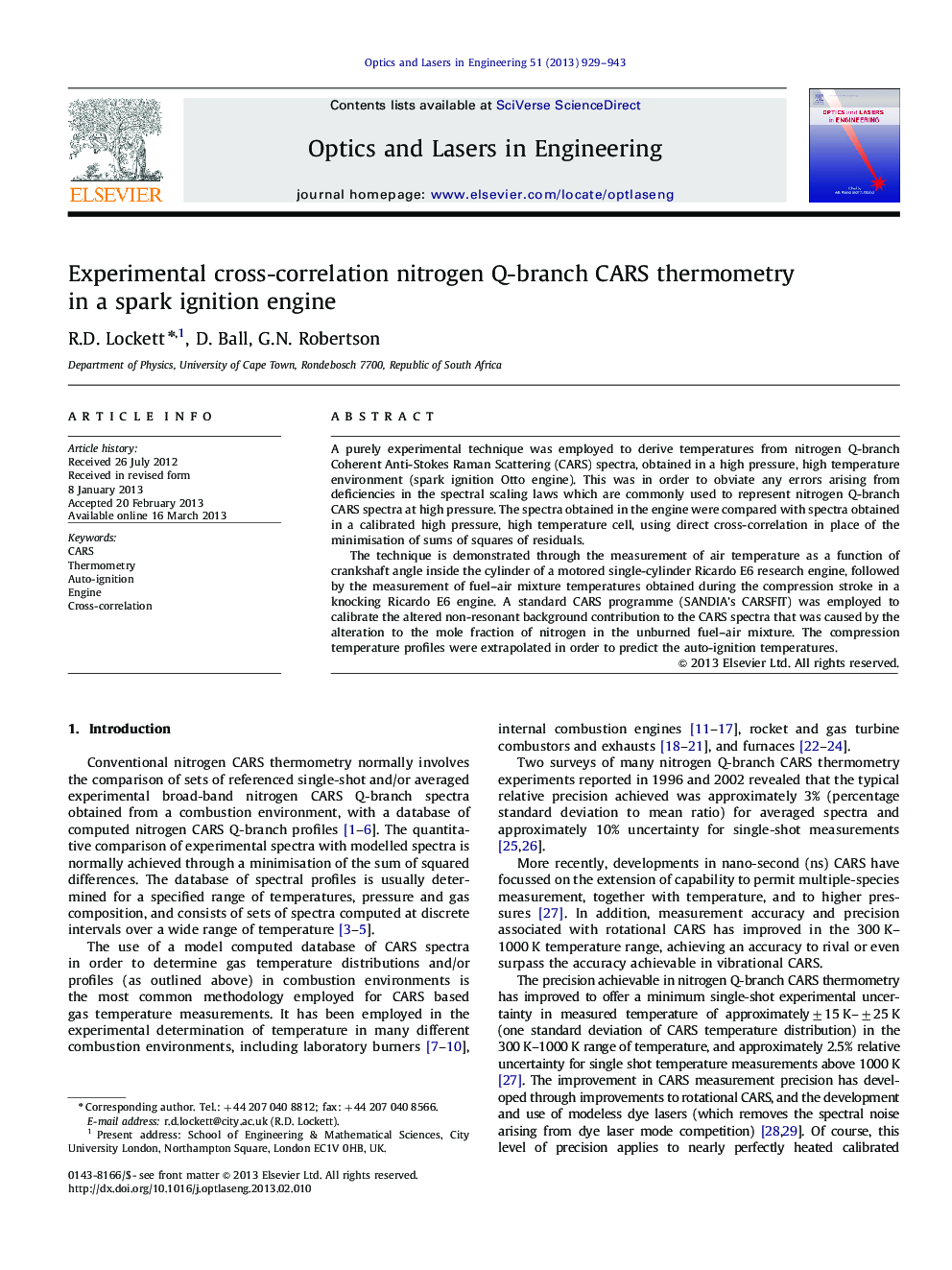| Article ID | Journal | Published Year | Pages | File Type |
|---|---|---|---|---|
| 735692 | Optics and Lasers in Engineering | 2013 | 15 Pages |
A purely experimental technique was employed to derive temperatures from nitrogen Q-branch Coherent Anti-Stokes Raman Scattering (CARS) spectra, obtained in a high pressure, high temperature environment (spark ignition Otto engine). This was in order to obviate any errors arising from deficiencies in the spectral scaling laws which are commonly used to represent nitrogen Q-branch CARS spectra at high pressure. The spectra obtained in the engine were compared with spectra obtained in a calibrated high pressure, high temperature cell, using direct cross-correlation in place of the minimisation of sums of squares of residuals.The technique is demonstrated through the measurement of air temperature as a function of crankshaft angle inside the cylinder of a motored single-cylinder Ricardo E6 research engine, followed by the measurement of fuel–air mixture temperatures obtained during the compression stroke in a knocking Ricardo E6 engine. A standard CARS programme (SANDIA's CARSFIT) was employed to calibrate the altered non-resonant background contribution to the CARS spectra that was caused by the alteration to the mole fraction of nitrogen in the unburned fuel–air mixture. The compression temperature profiles were extrapolated in order to predict the auto-ignition temperatures.
► Normalised cross-correlation facilitates quantitative comparison of spectra. ► A high pressure, high temperature cell has been used to generate a spectra database. ► An experimental method has been developed to measure engine cylinder temperature. ► Compression temperature profiles during knock for methanol and coal-to-liquid gasoline.
